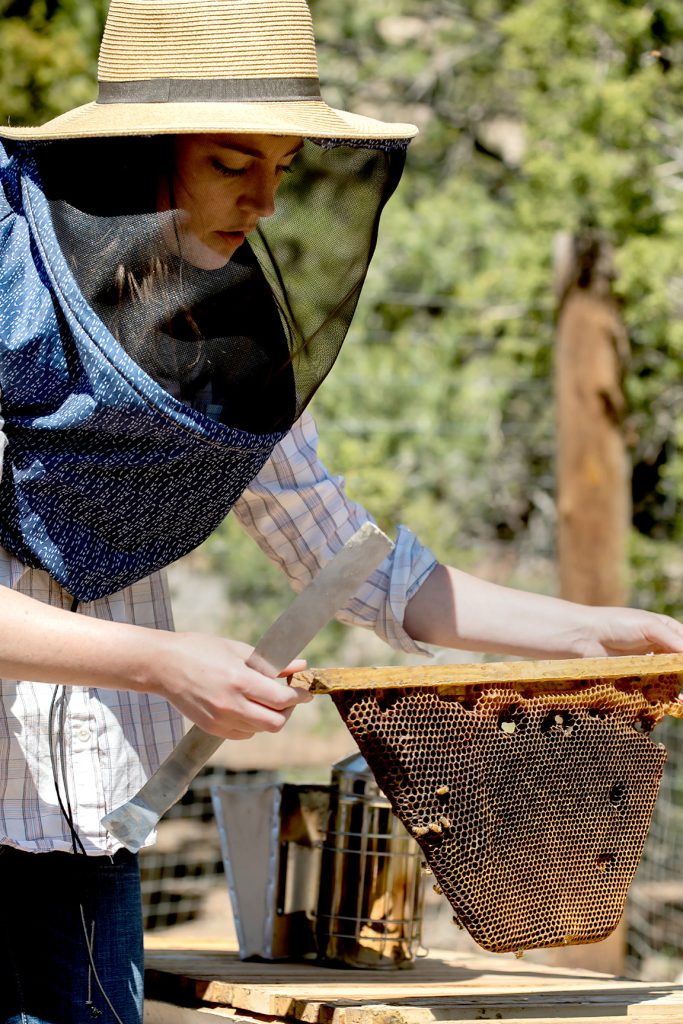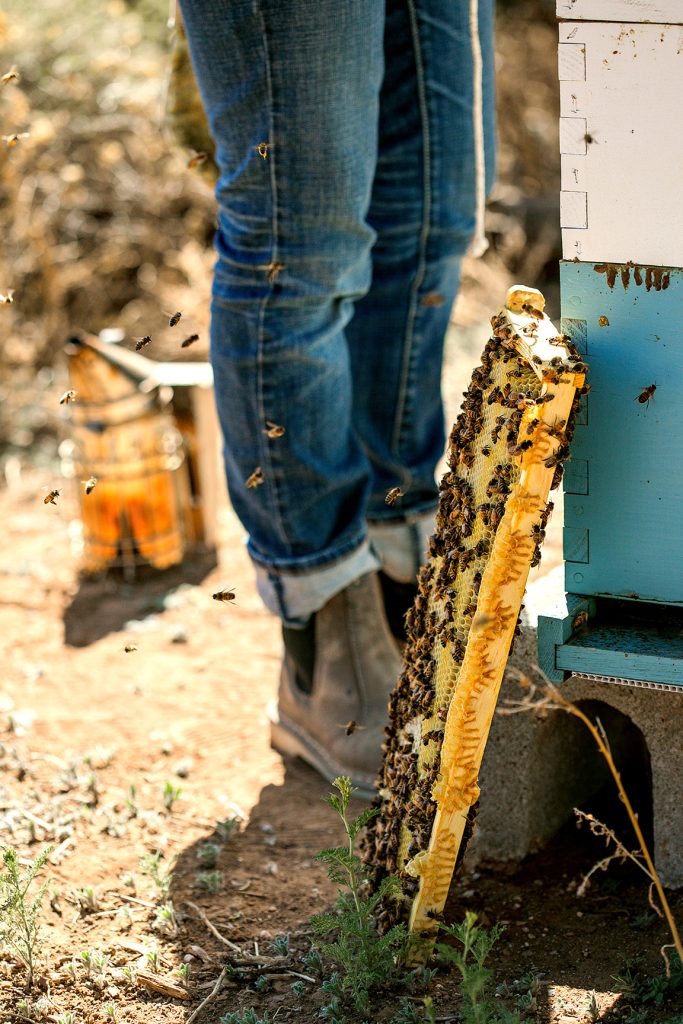by Amy Owen


As a beekeeper, I felt out of place when I walked into the New Mexico Pest Management Association Conference. We have some similar interests—we all like to learn about insects—but our goals for our work can seem opposed. As a beekeeper, my goal is to keep honey bee colonies alive, healthy, and vibrant. On the contrary, pesticide applicators try to eliminate colonies of insects that the public views as pests.
I was invited to speak on the subject of protecting bees and other pollinators from pesticides (which include insecticides and herbicides). This is something I am passionate about, and I thought this would be a great opportunity to raise awareness about the negative effect pesticides have on bees. Before I began my talk, I saw a man with a sign that advertised a pesticide that I would soon be talking about: IGRs, or insect growth regulators. I’d share how insect growth regulators harm bees by rendering them unable to move from one stage of their life cycle to the next, thereby causing stagnation in a colony. My anxiety level grew.
We had a short break, during which the man advertising IGRs let me know that he would be introducing me as the next speaker. I thought to myself: could this get any worse? I was about to show a slide, just feet away from his sign, talking about how harmful his product was.
He shared that the company he represented once developed miticides for beekeepers. We then had a lively chat about the use of miticides, the importance of them, and how they are often misused and consequently lose their efficacy.
Confession: as a beekeeper, I use organic miticides in my hives to keep varroa mite levels down. Varroa mites are parasitic mites that feed on a honey bee’s fat stores. If mite levels in a colony aren’t kept below a certain threshold, the honey bees will likely succumb to the infestation and the diseases that are vectored by the varroa mite.
As a beekeeper, I try to follow an integrated pest management (IPM) approach to control mite levels. My primary methods of control include finding bees with genetic traits that are mite resistant, spacing hives at least 4 feet apart, keeping apiaries small, and allowing colonies to have natural brood breaks. I monitor my hive’s mite levels regularly, and take notes so that I know which hives have genetics or conditions that are most conducive to keeping mite levels below a recommended threshold. If a colony’s mite level goes above this threshold, I use an organic miticide (formic or oxalic acid) to lower the mite load. If I see that I am consistently having to treat a hive, I will requeen it with a queen whose genetics are more mite resistant.
Continue reading
